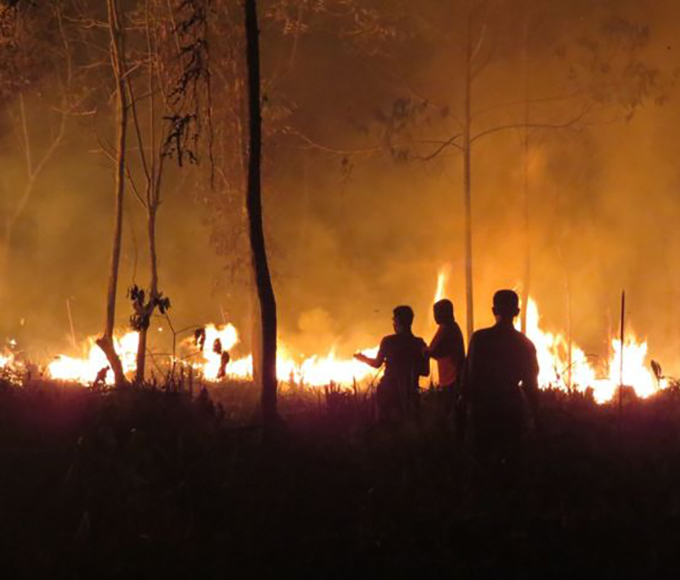
Fires in Indonesia, which burned more than 2.1 million hectares of forest and peatlands in 2015, have raged in dry seasons year on year, killing people and wildlife, destroying livelihoods, and producing a thick haze that drifts north from Sumatra and west from Borneo, blanketing Singapore and Malaysia in smoke, reports Global Metrics for the Environment.
The choking haze, which covered a vast expanse of Southeast Asia, killed more than 20 people and sickened at least half a million, offering a stark reminder that pollution and its pernicious effects do not respect national boundaries.
It will require local policy and enforcement in Indonesia along with regional cooperation to remedy this environmental and human health disaster
The more than 94,000 individual Indonesian fires are primarily the result of “slash and burn” land clearing, a practice in which landowners, both large and small, raze forested areas and burn the debris or drain peat bogs and incinerate carbon-rich peat deposits.
The fires clear and prepare land for planting crops or sometimes to interfere with their competitors’ operations.
Indonesia is the world’s largest producer of palm oil, and farmers light fires to make way for more palm plantations, pulpwood, and other agricultural operations.
Most of the fires raged outside of official agricultural and pulpwood concessions, meaning they were set illegally, and many of these fires reduced protected forest and peatlands to charred fields.
Shifting weather patterns
Shifting weather patterns have contributed to the disaster, as an extended dry season has allowed the fires to burn longer and over a larger area than ever before.
The impacts from these fires are widespread, both geographically and in the types of damages they cause. Transboundary air pollution has in some places exceeded 2000 on the Pollutant Standard Index.
Anything above 300 is hazardous to human health. This air pollution causes widespread respiratory infections and premature deaths.
The fires have released more than 1.5 billion metric tons of carbon dioxide this year alone, tripling Indonesia’s greenhouse gas emissions and making it the fourth largest emitter of climate pollutants.
The fires have also devastated wildlife, threatening one of the most biodiverse ecosystems on Earth. Endangered species, including Orangutans, have lost critical habitat. Many animals have been sickened by the smoke, and the flames have killed untold numbers.
In addition to environmental costs, estimates of the economic impacts exceed US$14 billion.
A transboundary disaster of this magnitude requires responses at all level of government. In 2014, Singapore passed the Transboundary Haze Pollution Act, giving its government the authority to prosecute companies operating in Indonesia that cause air pollution in Singapore.
Haze pollution law
Also in 2014, Indonesia ratified the Association of Southeast Asian Nations (ASEAN) Agreement on Transboundary Haze Pollution, which, among other policies, improves fire monitoring.
Laws are only a starting point for improving environmental performance.
In 2015, faceless corporations and anonymous people have burned more land and created more transboundary pollution than in years past, despite new laws forbidding these practices.
In order to manage land for the benefit of people and the environment, nations have to take responsibility for enforcing existing laws and welcome international monitoring assistance.
National sovereignty must be respected, and yet Indonesia’s fires and haze violate the sovereignty of neighboring states. Pollution does not respect political boundaries.
The parties responsible for pollution, however, are subject to governmental authority. Only through cooperation and respect for the rule of law can governments make lasting environmental progress.
From Global Metrics for the Environment: The Environmental Performance Index ranks countries’ performance on high-priority environmental issues. The 2016 Environmental Performance Index is a project lead by the Yale Center for Environmental Law and Policy (YCELP) and Yale Data-Driven Environmental Solutions Group at Yale University (Data-Driven Yale), the Center for International Earth Science Information Network (CIESIN) at Columbia University, in collaboration with the Samuel Family Foundation, McCall MacBain Foundation, and the World Economic Forum. More information and references here.












































